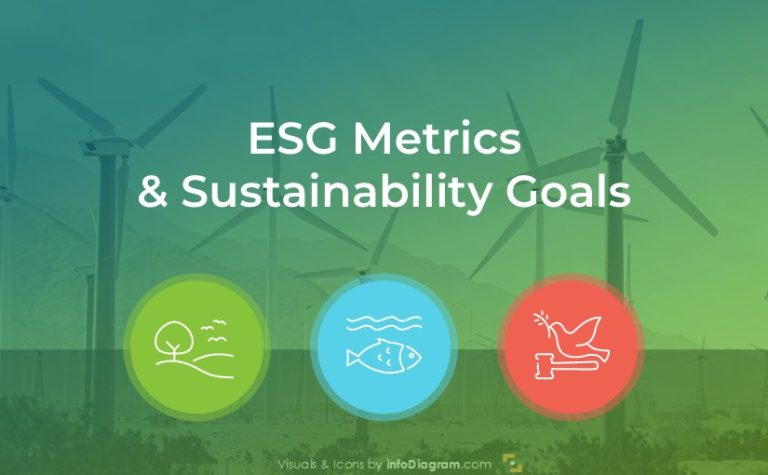Feedback Training Presentation Hints and Visuals
There is always something changing in our workplace – new colleagues, updated projects, budgets, and the market. Paradoxically, change is perhaps the one constant.
Feedback – seeking it, giving it and receiving it – is one of the most effective tools we have for harnessing and promoting change so that it is to our benefit.
Elevate your business performance presentations with our curated resources – visit our financial performance PPT reports webpage.
Feedback is a great and powerful tool if used correctly. This training presentation template can serve as a handy guide for you and your team on how to use feedback properly.
Download an editable version of all Feedback Training Slides here.
Three Reasons to Use Feedback
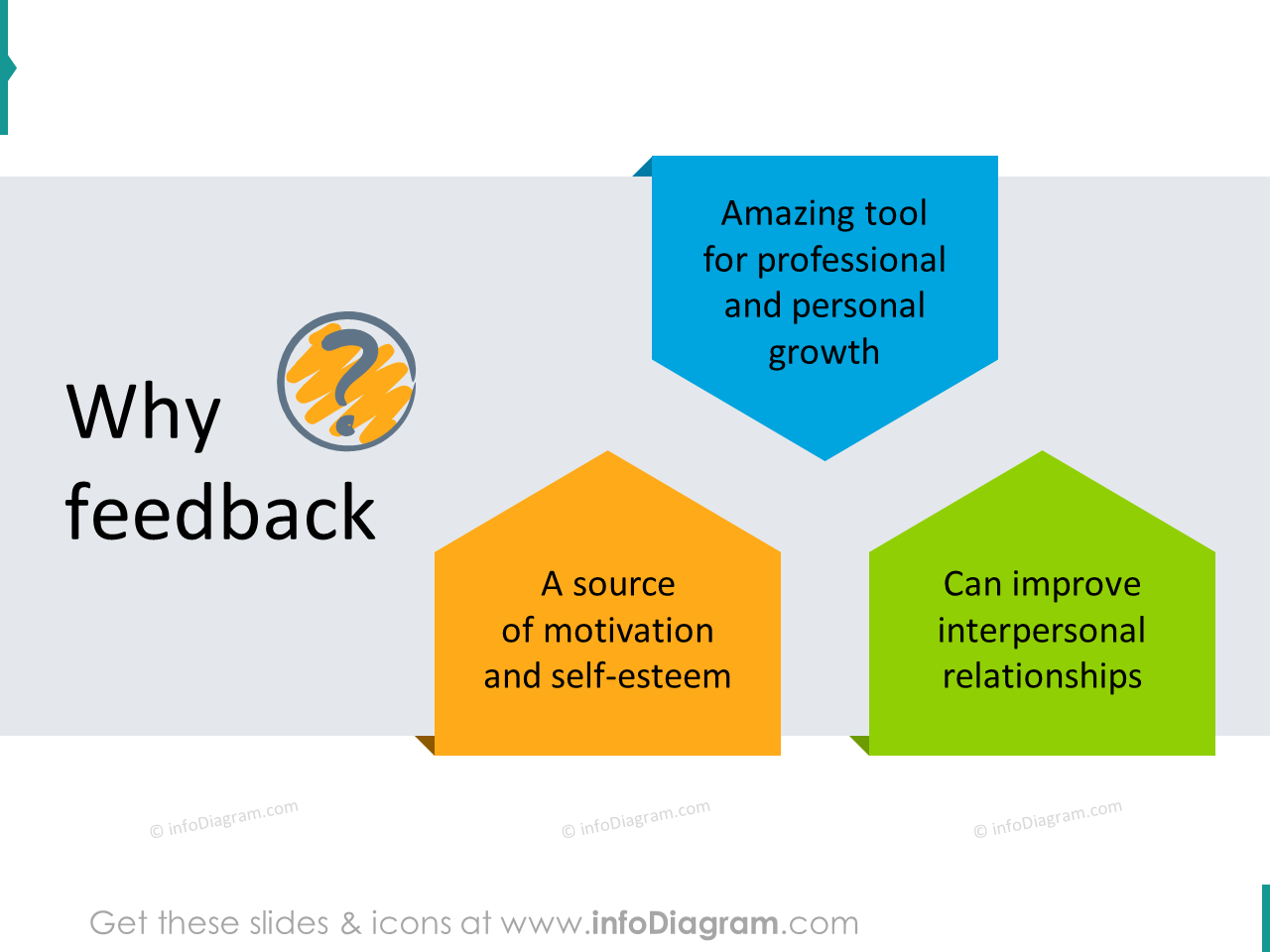
Feedback is an essential component of effective change. Good quality feedback is one of the most important ingredients in building effective working relationships and getting things done. It can motivate people and improve the performance of their work.
What is the definition of feedback?
So let’s start with the definition. Strictly speaking, feedback is information about how we are doing in our efforts to reach a goal.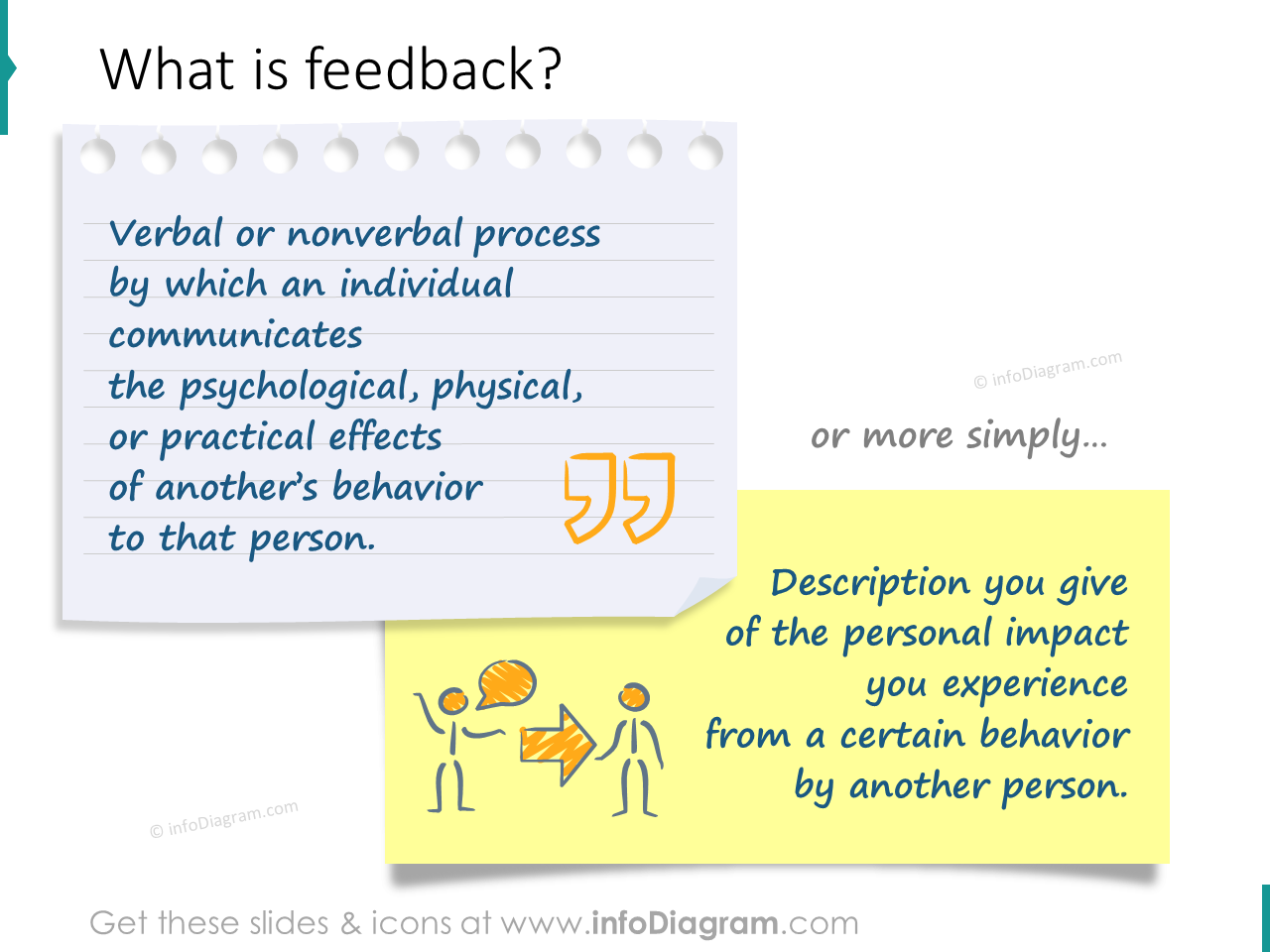
Remember the Rules of Giving or Receiving Feedback
There are certain feedback rules, both for giving and receiving it. The most important is to remember that we’re giving feedback to help people and we should receive it as a gift. Yes, sometimes your coworkers or managers can be too straight, but the best decision is to listen and notice important points. Better to remember the rules before the feedback session and you can see them on these slides:
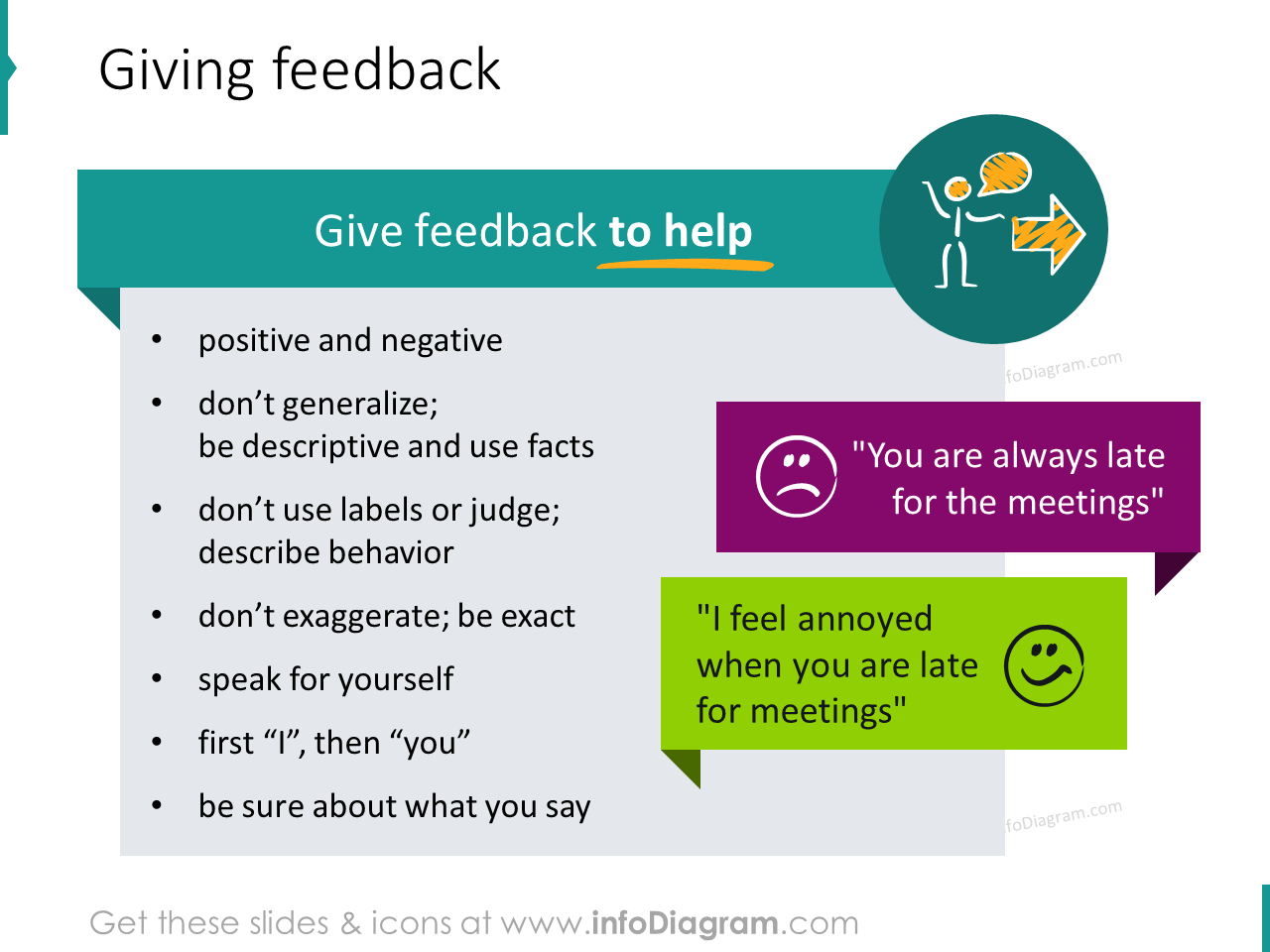
There are several principles to remember during feedback sessions (read more in this Harvard Business Review article here):
- Take an honest look at both your good and bad habits
- Clear out all distractions that might draw your attention away from the person in front of you
- Ask clarifying questions and repeat back what you heard
Don’ts of proper feedback communication:
- Assume you know all of the answers allow for the possibility that others have valuable information to share
- Overlook nonverbal cues ‘they often reveal what a person is really thinking
- React emotionally to what is being said’ acknowledge the information even if you don’t agree
Below you can check some general communication tips:
- Well-timed feedback
- Timely delivery
- Concise form
- Apply it frequently
- Stay private
- Be adequate
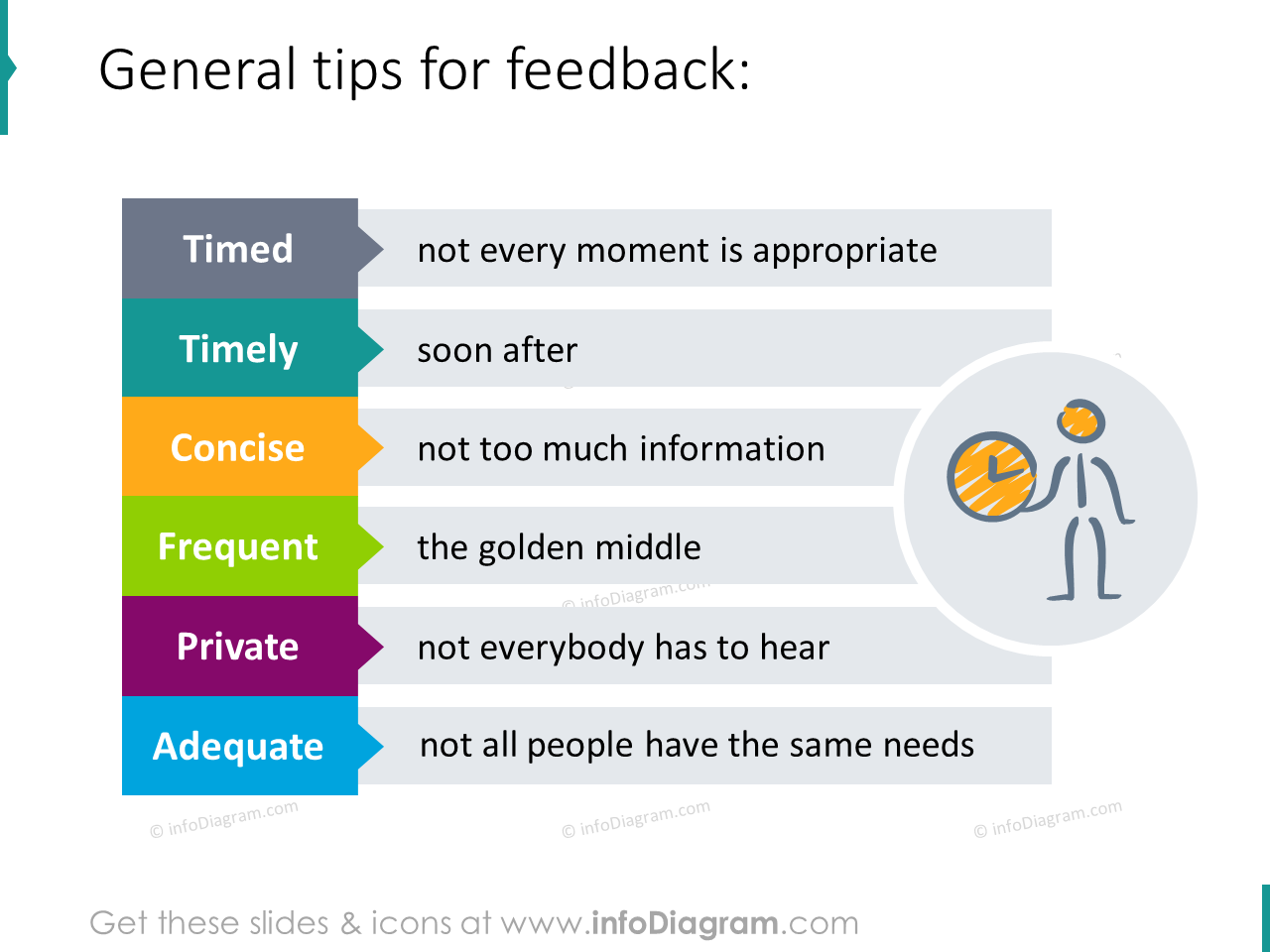
In the feedback training template, you will also find 9 tricks for giving feedback with examples.
Structure of Giving Feedback
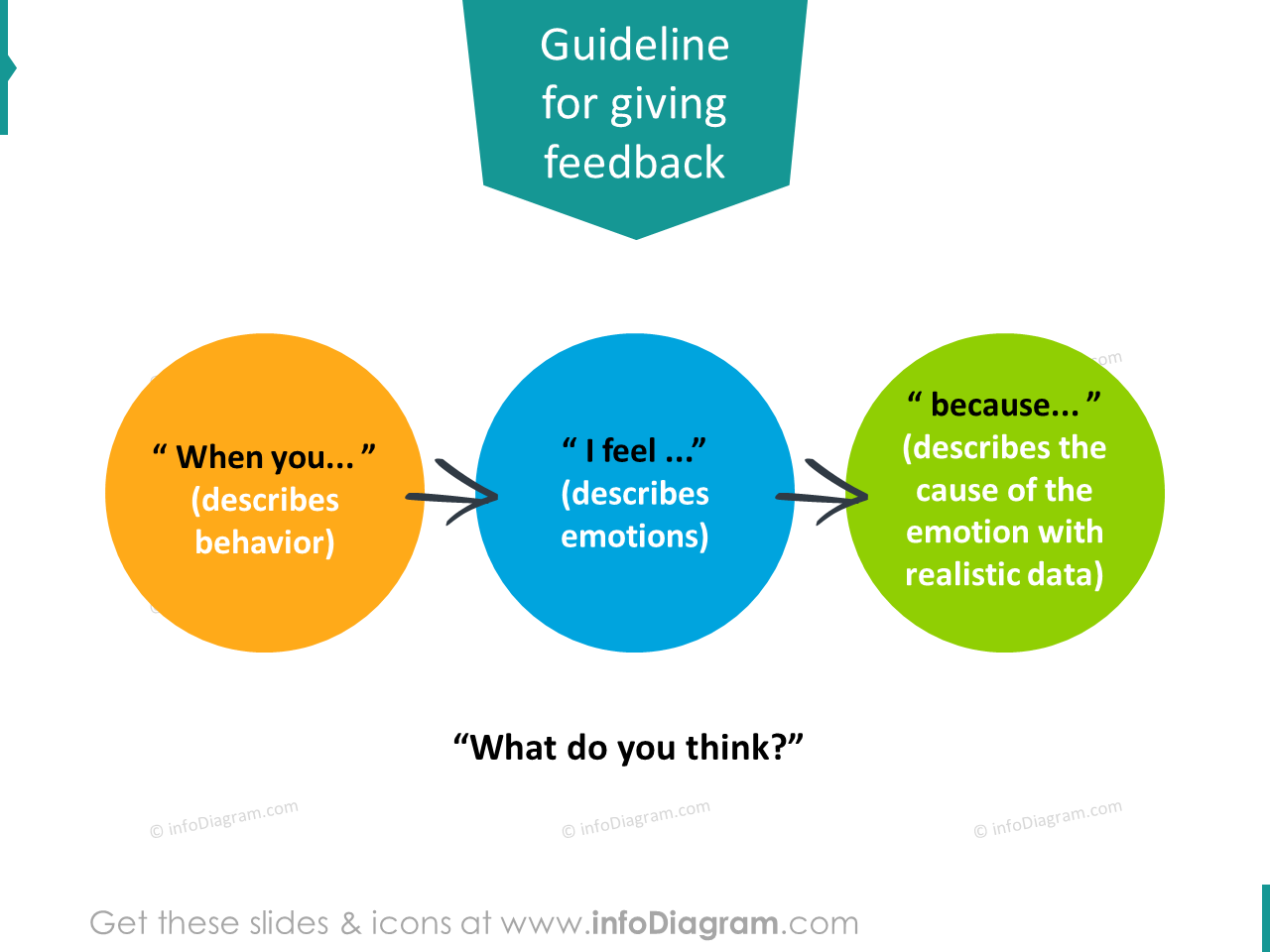
Check out these three crucial phrases to use while giving feedback. Always remember: every word you say means something to another person, so be careful with the language you use.
Feedback is a Gift
To sum up the proper use of feedback:
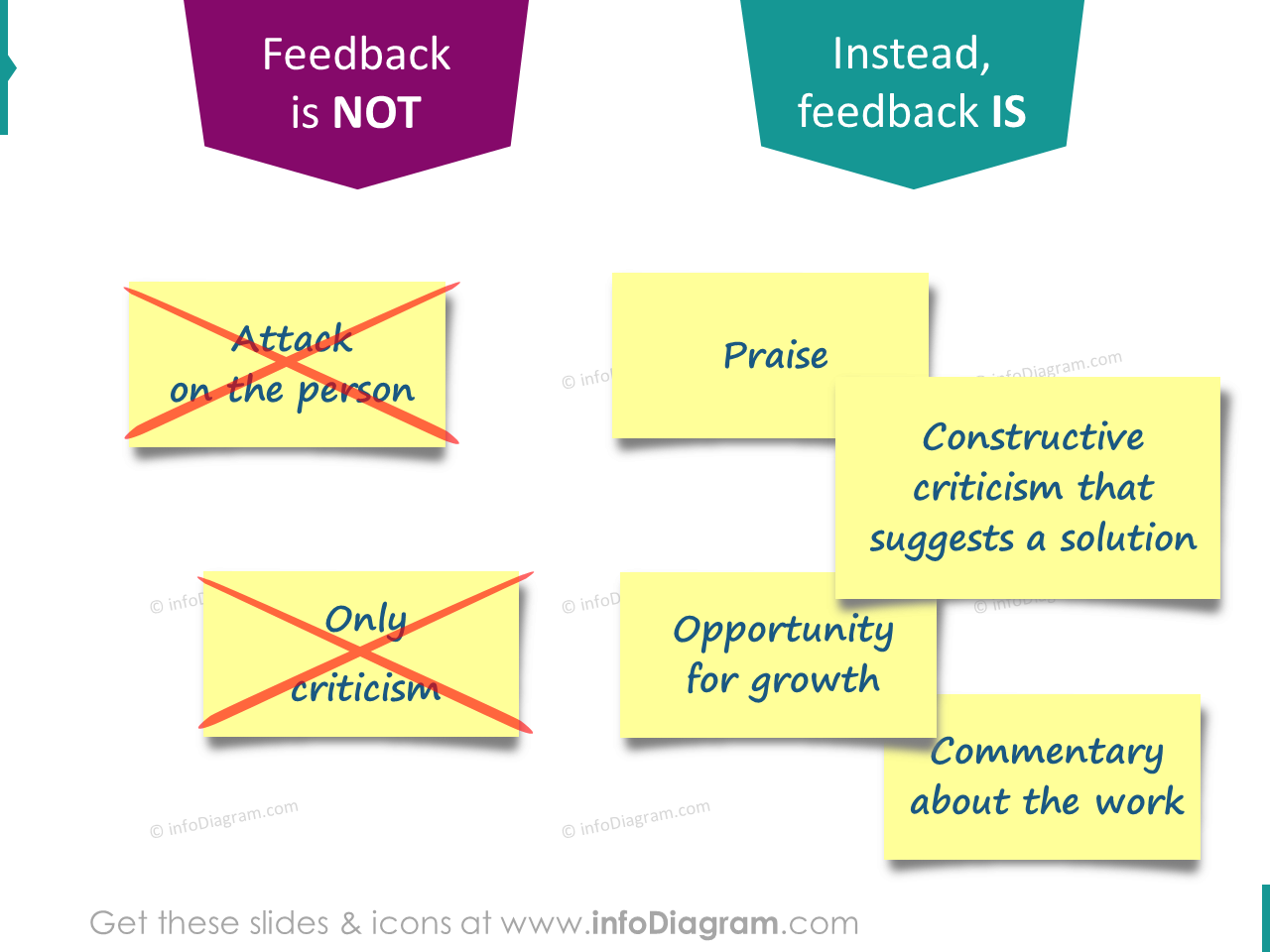
Feedback is a tool for continued learning. And continued learning is the key to improvement. Don’t underestimate the importance of it for your company. Remember:
Good quality feedback is one of the most important ingredients in building effective working relationships and in getting things done.
For more inspiration, subscribe to our YouTube channel:
Source of Feedback Training Toolbox
If you like the graphics, all slides are available for download in the editable form on our infoDiagram webpage. You can find there those slide templates
- What is feedback – Definitions, How the feedback should be, and what feedback is not.
- Types of feedback – supportive and corrective
- Reasons for feedback – motivation, improve relationship, growth tool
- Criteria for proper feedback: Timed, Timely, Concise, Frequent, Adequate, Private
- Tips for giving feedback: Be specific, descriptive, personal, feedback sandwich, and provide a solution…
- Tips for receiving feedback, guidelines – the schema for giving feedback
- Feedback types – written versus verbal
- 360-degree feedback areas: Skills, Knowledge, Style
- Exercises for feedback communication
- Examples of proper and incorrect feedback messages
- Feedback Summary and Conclusion
Check the template content below:


